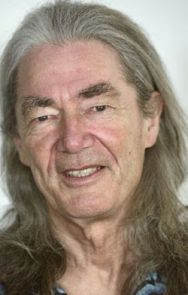Modern Shamanism is an attempt to re-create the spirituality
of
indigenous peoples. It is hard to say how successful it is in that. What I
think we can say is that if we listen to nature, listen to ‘the spirits’,
listen, perhaps above all, to ourselves, we won’t go far wrong. It is this
listening, this paying attention that is timeless. It is in itself a
transformative, magical act.
It is also what has been lost. Nature reminds us of who we are.
Yet there is little space for nature in urban life. And the voice of the
collective is also very powerful, telling us how to live our lives, what makes
us a ‘good’ person, what makes us a ‘bad’ person, what is sense and what is
nonsense – and listening to ‘spirits’ generally comes under the nonsense, if
not sectionable, category.
Shamanism could be seen as the act of listening to ourselves
at all levels, and with that comes something that is uniquely ourselves, and
with that comes the power to live.
The connection to the spirits that is made in shamanic journeying and other practices is also the connection to the imagination and the intuition – a level that is both deeply ourselves yet beyond us, connected to the whole web of life and matter.
Shamanism gives an initiation into the Imagination – capital
‘I’, a connection to the Otherworld, without which we are not fully human.
So the creation of an individual self lies at the heart of
Shamanism, a self that does not exist without a deep connection to something
beyond itself. It is hard to know how much room there is/was for this
individuality in indigenous societies. No doubt it depended. But the pressure
just to survive can demand conformity. In the West, we have been part of a
large collective for a long time, a collective that for 1000 years has
veered towards fundamentalism, whether of a Christian or scientific materialist
bent.
Fundamentalism occurs once you think there is only one
reality. I once asked a Chippewa-Cree friend if his people got fundamentalist about their own creation myth,
and he said that was difficult, because they had several creation myths, some of
them contradictory! For this reason I think it is good that children are taught
both evolution and creationism: both these ‘isms’ can think they are the only
reality and, like the Chippewa creation myths, it shows children that there is
more than one way of looking at things. (Personally, I prefer creationism,
because it at least has a transcendent reality.)
Shamanism
itself can of course veer towards fundamentalism,
just like anything can. At the heart of that veer is our very human need
for
certainty – ‘this is how it is’ – and we look for it in creeds and
teachers or
in a rigid sense of our own rightness, or the rightness of our spirit
guides. Here's a test: how do you respond if someone disagrees with your
'spirit guide'?
This is where the ‘this world’ aspect of shamanism needs to
come in. It is not enough to have a deep connection to the Otherworld. We need
an understanding of our own psychology and the ability to dis-identify from it.
In the American Indian stories you get Wisahitsa, a character who is always
getting into trouble because of his own self-importance. So the Indians (as
they call themselves, not ‘Native Americans’) spoke to and were helped by the
spirits, but they were also, it seems, trained in human psychology.
So Shamanism needs to involve the cultivation of both the ‘this
world’ and the ‘otherworld’ aspects of the personality. You could say that
shamanism needs psychology, while psychology needs shamanism.
Part of the beauty of shamanism is its emphasis on direct
experience. There is very little in the way of a particular worldview that can
be turned into an ideology. The key is not to take things literally. Don’t,
for example, take the idea of the upper world, middle world and lower world
literally, as a cosmology that if embraced strongly will somehow bring one
closer to the world of indigenous peoples.
Literalized reality presses very strongly upon us these days in
the form of ‘facts’. Science doesn’t have creation stories like every other
tradition before it, it has ‘facts’, how things ‘actually’ happened. My
Chippewa Cree friend saw evolution as a story, not a ‘fact’, and that is how I
try to treat all of science: a set of stories, useful stories in many cases,
but still stories.
What we have lost is the reality of the inner world.
Shamanism is an initiation into the ‘inner’ world. When that world is awake,
the outer world becomes more relative: it is a manifestation of mind, of
consciousness, it does not need to be taken so seriously any more.






1 comment:
This is interesting. In Yakut/Siberian shamanism, there is such a thing as shamanic madness, which is most likely brought on by the stress of involvement in the very 'inner world' you discuss.
There is a very good book by physicist Greg Matloff - Star Light, Star Bright - in which he looks into the field of metaphysics (which includes spirit medicine and shamanism) in an effort to understand why some stars seem to move of their own volition, as if they are conscious entities. He is essentially posing the question, 'are we part of a greater Counsciousness?'.
Post a Comment